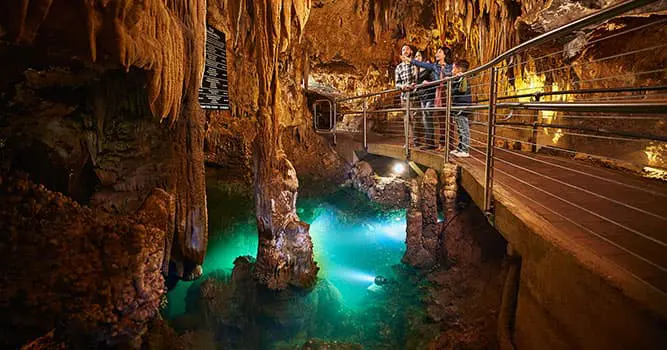120 Years…
That is how long it takes just to grow one inch of Luray Caverns. But make no mistake, the caverns are growing.
Like Luray Caverns, most caves result from a relatively straightforward process in nature, consisting of a layer of limestone, mildly acidic water and carbon dioxide multiplied over millions of years.
In the case of Luray, the caverns began to take shape after limestone in Shenandoah Valley formed because of an inland sea.
Like most caves, rainwater picked up diluted carbonic acid as it seeped through decaying vegetation in the soil above and that seeped down into the limestone. The hollowing-out of the caverns occurred as the acidified rainwater made its way into the fissures and cracks of the rock, dissolving and eroding layers along the way.
Over time, rainwater filled all the openings in the limestone, enlarging the existing fissures and crevices. Eventually, the water descended into lower levels of the Earth leaving huge limestone chambers behind. With the large volume of water finally subsided, only a very slow seepage occurred. This is where nature’s design process truly began.
Some rocks contain calcium carbonate. To this day, when this compound enters the chambers, it gives off carbon dioxide and from this exposure, a chemical reaction occurs. Droplets of lime begin to form into a thin deposit of crystallized calcite. Over time, these form stalactites on the cave ceiling or stalagmites when they drop upon the cavern floor – giving the Caverns its distinct ornate design.
This process occurs over hundreds of millions of years and is how a cave grows. To see for yourself what nature and time can do, stop by Luray Caverns for a visit.
To plan your trip, visit www.LurayCaverns.com





